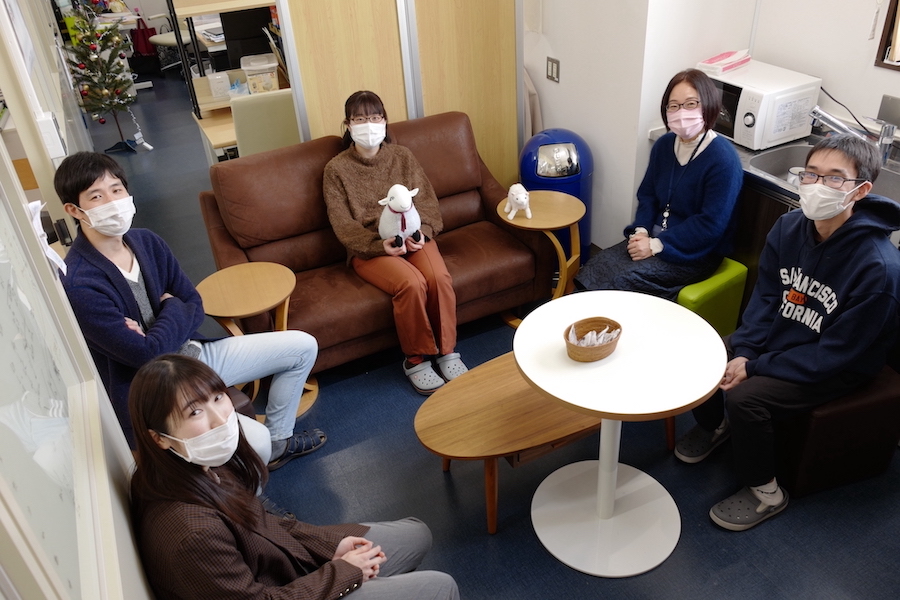Laboratory for Nutritional Biology
Team Leader Fumiaki Obata joined RIKEN BDR in April 2021 from his former post at The University of Tokyo to lead the new Laboratory for Nutritional Biology. He first began working with fruit flies,
How many members are in the laboratory?
There are currently (as of February) five people in the laboratory–three students who came with me from The University of Tokyo, a part-time administrative staff, and me. From April, one of the students will become a RIKEN Special Postdoctoral Researcher (SPDR) and we will also have one research scientist, one technical staff, and one master’s program student joining the laboratory bringing the total number to eight people.
What are the main research themes of the laboratory?
The overarching theme of the laboratory is investigating how diet, particularly the nutrients in food, influences health and lifespan using the fruit fly as a model. The advantage of using Drosophila is firstly their lifespan is short–two to three months–which allows us to evaluate healthspan quickly, cheaply, and without needing a lot of space. The fact that they are easy to genetically manipulate is also another advantage. We also need to consider how gut microbiota is affected in response to diet conditions. Understanding how each nutrient or bacteria affects lifespan requires actually genetically manipulating the host (Drosophila), thus with methods already established for manipulating these three properties, the Drosophila is an excellent model for use in our research.
What are some of the strengths of the laboratory?
It is often overlooked, but many studies using model organisms are carried out without considering diet (food) or gut microbiota, which presents a possibility that the data collected has been unknowingly affected by any of these factors. One of the main strengths of our laboratory is that, in addition to being able to manipulate Drosophila genes, we are equipped to precisely modify the dietary nutrients as well as the gut microbiota. When conducting experiments, we need to clearly know the conditions of nutrients and gut microbiota as well as the genome sequence of Drosophila and form conclusions after taking these aspects into consideration.
Is there a long-term goal you are working toward in your research?
We humans often eat three times a day, consuming large amounts of nutrients through our meals. The booming health food industry suggests that there are many people who are careful about certain nutrients they intake. It’s said that there are over 26,000 types of nutrients, and we go about our daily lives without being aware of the amount of each nutrient contained in the food we eat. Our healthspan is likely greatly affected by whether there are large or small amounts of certain nutrients (e.g. amino acids) in our food. I hope to be able to explain how these nutrients affect our healthspan from a molecular perspective. Translating our work into real-world settings is also something I am interested in. Understanding the fundamental relationship between nutrients, gut microbiota, metabolism and healthspan is of course our underlying goal, but I think our research is easily applicable to humans as well. I would be very pleased if we can translate our findings to benefit society. For example, many people nowadays are taking nutritional supplements, but it is still not clear whether they are good for our health or how and when to take them for them to be effective. We may be able to propose possible interventions that are backed by scientific evidence.
Were there any challenges setting up the laboratory during the COVID-19 pandemic?
Not being able to freely meet with people outside the lab, I think has had a significant impact on me. I’ve come to realize that when working in a new environment the ease of carrying out certain tasks depends greatly on knowing who is in charge and knowing what kind of person they are. It is difficult to “run into” someone online without a reason to meet online and still not easy to just drop by another laboratory or have someone come by for a visit. We have been fortunate to enjoy close interactions with the neighboring laboratory headed by Dan Ohtan Wang. It has been almost one year since I joined BDR, but I have only been able to meet seven or eight other team leaders in person. I may have crossed paths with others, but because we can’t confidently recognize each other with our masks on, we hesitate calling out to each other. All of my laboratory members, including me, are friendly so I hope everyone gets to know us better.
